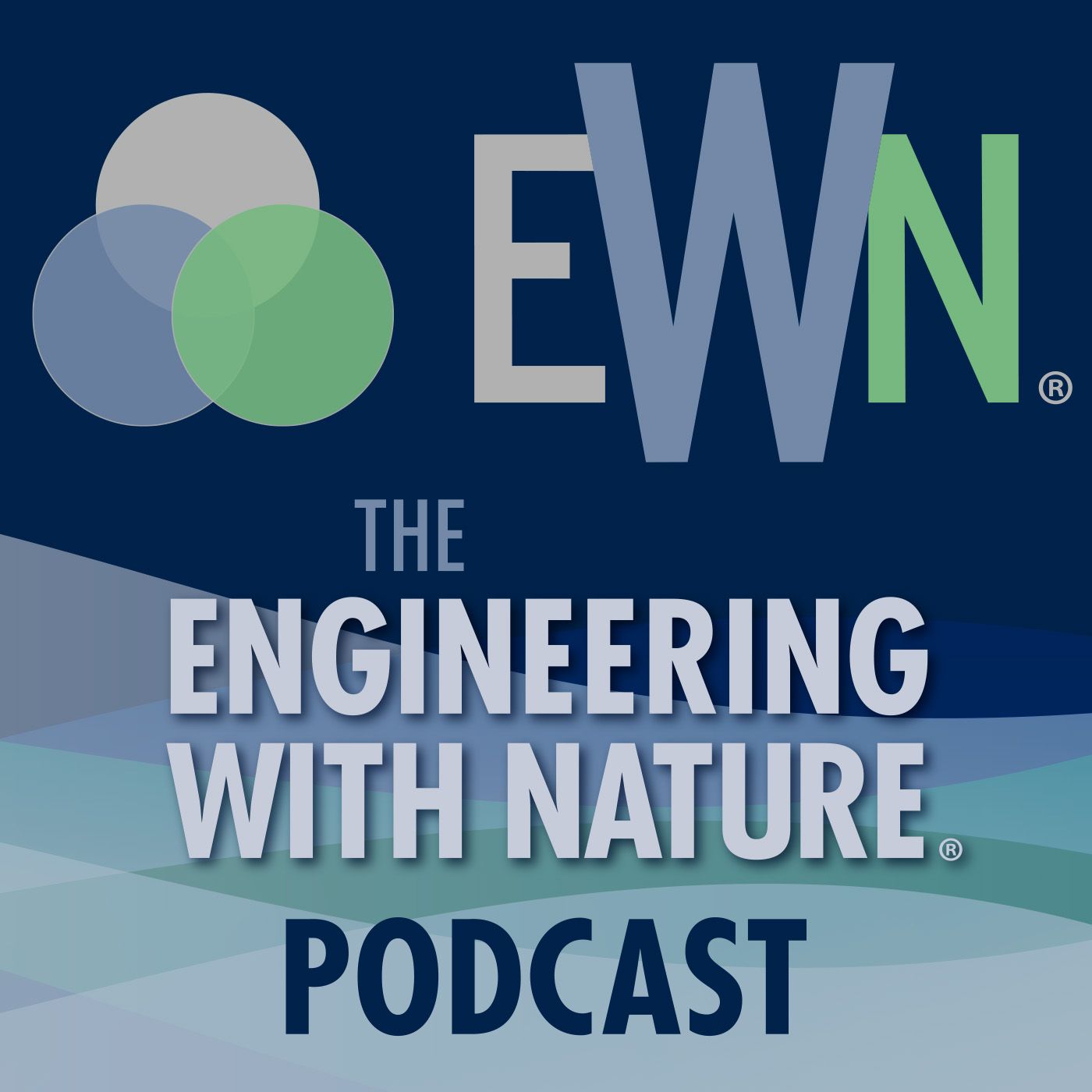Nature-Based Solutions from the Halls of the Exec Office of the President
Description
What happens when a nation focuses on addressing the critical challenges posed by climate change by investing in nature? That’s what we’re talking about in Season 5, Episode 2, of the Engineering With Nature® Podcast. Host Sarah Thorne and Todd Bridges, Senior Research Scientist for Environmental Science with the US Army Corps of Engineers and the National Lead of the Engineering With Nature Program, are talking with two guests from the White House. Heather Tallis is the Assistant Director for Biodiversity and Conservation Sciences in the White House Office of Science and Technology Policy, and Lydia Olander is the Director of Nature-Based Resilience for the White House Council on Environmental Quality. Heather and Lydia are two of the three co-chairs of Opportunities to Accelerate Nature Based Solutions, a report to the National Climate Task Force, which was released by the White House November 8, 2022.
Heather and Lydia faced a big challenge and a very tight timeline. On Earth Day, April 22, 2022, President Biden issued Executive Order 14072, Strengthening the Nation's Forests, Communities and Local Economies. Section 4, “Deploying Nature-Based Solutions to Tackle Climate Change and Enhance Resilience,” called for developing an interagency report. Heather, Lydia, and their fellow co-chair, Krystal Laymon (from the White House Office of Domestic Climate Policy), were charged with leading the process of engaging key Federal agencies, including the US Army Corps of Engineers, to identify opportunities for greater deployment of nature-based solutions (NBS) across the Federal Government, including through potential policy guidance and program change.
Through consultation with agency partners, public roundtables, and Tribal Consultations, Heather, Lydia, and Krystal found that despite a lot of interest, there are real barriers to using nature-based solutions. The breadth of different applications of nature-based solutions underway by Federal agencies can be seen in the Nature-Based Solutions Resource Guide, a companion report that includes 30 examples. Lydia notes that, despite the wide range of Federal agency perspectives and stakeholders included in the consultations, the team identified a set of common themes and challenges, which became the focus of the report.
The Report identifies five strategic areas for action: “Policy,” including permitting, reviews, and cost-benefit analyses; “Funding”; application in “Federal Assets,” including facilities, lands, and waters; building the nature-based solutions “Workforce”; and producing “Evidence” to support effectiveness of NBS based on continuous innovation, learning, and research priorities.
As Todd notes, the timing and the opportunity for this report’s recommendations are unpreceded: “We’re in a time of important change or evolution in people’s thinking about nature. There’s a growing awareness that nature and its ecosystems are a foundation, the source and supply, the economy if you will, to address these social and environmental challenges. An increasing number of people from diverse walks of life and professions and communities are committed to making progress on nature-based solutions. In fact, I’d say they’re hungry for it. So there’s a motivation now that maybe just a few years ago wasn’t as well developed.”
For more information and resource links, please visit the EWN Podcast page on the EWN website at https://www.engineeringwithnature.org/
Related Links (links may not be active on all platforms)
Todd Bridges at LinkedIn Lydia Olander at LinkedIn Heather Tallis at LinkedIn
More Episodes
When we think about the use of nature-based features to increase coastal resilience, the focus is mostly on coasts along the ocean. But what about the Great Lakes? Over the past 10 years, the Great Lakes have experienced both historic high and low lake levels. These extreme fluctuations cause...
Published 11/26/24
Published 11/26/24
In Season 8, Episode 3, host Sarah Thorne and Amanda Tritinger, Deputy National Lead of the Engineering With Nature (EWN) Program, US Army Corps of Engineers (USACE), are joined by Brian Davis, Associate Professor of Landscape Architecture at the University of Virginia (UVA), and Cathy Johnson,...
Published 10/22/24


